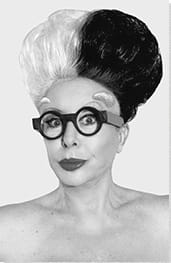Summary of ORLAN
ORLAN molds her own flesh in the service of her art. Transforming her face over the course of several surgeries in the 1990s, she is a pioneer of what she terms "Carnal Art". She raises fascinating questions of beauty, self-image, and consent, prefiguring and inspiring many of the conversations taking place today on the subjects of transhumanism, utopian technologism, and body modification. Her practice is both an inspiration to artists working with the body and a precursor to these wider social conversations around identity and bodily autonomy in the 21st century.
But ORLAN's work extends well beyond the surgeons table, encompassing sculpture, painting, installation, and the innovative use of technology in visual art. Since before her famous surgical performances in the 1990s she has consistently experimented with technology, working at the borders of art, science, and engineering through genetic and biological experimentation, artificial intelligence, and robotics. After nearly 60 years or artistic practice, ORLAN is still an artist at the cutting edge of exploring relationships between the body and identity.
Accomplishments
- ORLAN is often characterized as part of the Body Art movement. Whilst she undoubtedly shares many concerns and practices with these artists, and inspired many artists working with their bodies today, she prefers to use the phrase "Carnal Art" to refer to her own work. To ORLAN, Body Art involves personal risk and is "mostly undertaken by male artists", whilst "Carnal Art" is about "pleasure and sensuality, not for endurance and suffering". Whilst this distinction is not absolute in art historical terms (many female artists were influential in Body Art, for example), the notion of 'Carnal Art' clarifies that ORLAN views her own work not as an exploration of pain or harm, but as a celebration of the elasticity and potential of the body.
- Whilst ORLAN's work may seem shocking, it has a strong connection to art-historical precedents, which the artist sees as being updated and developed by her surgical and bodily interventions. ORLAN has challenged audiences to see the body as a "readymade" after Marcel Duchamp, for example, innovatively connecting her unique practice to these older strategies of art-making.
- Although ORLAN's body is the subject of her work and the undoubted focus, the means through which she attracts her audience's attention to her body, such as using cameras, microscopes, and live feeds, is also a core part of its ability to generate meaning. As she says, her art is not "interested in the plastic surgery result, but in the process of surgery", the presentation of its transformation making the modified body a "place of public debate" and not merely a spectacle.
- ORLAN's use of her own body sits alongside a career-wide commitment to experiments with new technologies and innovative uses of existing tools. ORLAN is a pioneer of internet and Digital art through her pre-internet Minitel art magazine Accès-Revue, for example, and expanded the potential of the use of live feeds and satellite links to allow audiences across the globe to experience her surgical artworks simultaneously in the 1990s.
The Life of ORLAN
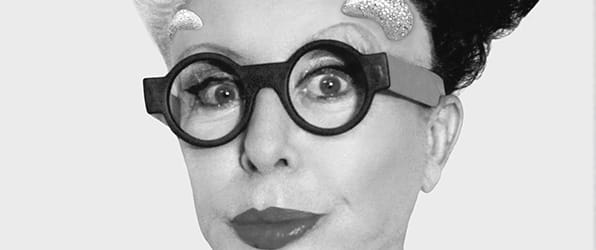
ORLAN refuses to separate her art from her life, with her most memorable performance works involving the surgical modification her own facial features. As she guards her personal life as a secret, ORLAN's art becomes her entire public identity.
Important Art by ORLAN
Baiser de l'Artiste (The Artist's Kiss)
For this early performance, ORLAN photographed her own nude torso and printed it out life-sized. She wore this image like a shirt, writing the advertisement and instruction "Insert 5F. The artist's kiss. Thank you." across it. She then walked around the International Fair of Contemporary Art (FIAC) in Paris offering kisses to attendees. A person would insert a 5F coin into the slot between the artist's breasts, which would drop down to a collection box over the artist's groin, and ORLAN would then kiss the person ("a real kiss... a French kiss"). As artist and writer Siobhan Leddy explains, "The kiss, which was accompanied by baroque music, would last for two or three seconds and end with an ear-splitting siren." This work provoked such a scandal that it caused ORLAN to lose her teaching position.
This performance was the debut of a new character that would come to personify ORLAN's entire oeuvre, called Sainte ORLAN. The character was inspired by the texts "Facing a Society of Mothers and Merchants" and "Art and Prostitution", written in collaboration with artist Hubert Besacier." The first line of the former text read: "At the bottom of the cross were two women, Mary and Mary Magdalene." ORLAN was struck by this polarization of womanhood she arrived at through writing collaboratively with Besacier, the text framing the "two inevitable stereotypes of women that are hard to avoid: the mother and the prostitute." She explains that with this performance, "The idea was to play on the ambivalence of the woman figure and the desire of both men and women towards those biblical and social stereotypes." This performance was the moment that ORLAN focused her creative energies on her own body and personal reinvention.
Performance
L'Origine de la Guerre
This work was directly inspired by Gustav Courbet's painting L'Origine du Monde (1866), a painting which shows a close-up of female genitalia. Here, ORLAN has recreated the painting, but with a male (actor Jean-Christophe Bouvet) with an erect penis in place of the female. The subject's upper torso is covered with a sheet, shrouding his identity, and reducing him to a hair-covered torso with genitalia.
ORLAN has faithfully recreated Courbet's image, staying true to the format and color palette of the original. However, by using a male instead of a female, and by including the title "The Origin of War", ORLAN evokes the idea that the male sexual organ is not only a source of power and virility, but also of the violence that pervades society. This piece demonstrates the long and deep engagement ORLAN maintains with art history, referencing and subverting canonical images and revealing the misogyny or patriarchal systems that underpin their art-historical status.
C-Print - Galerie Ceysson & Bénétière
The Reincarnation of Sainte-ORLAN
ORLAN's most famous and groundbreaking work was this performance series, which consisted of a series of nine plastic surgeries in the early 1990s. This marked the first time that plastic surgery was used as part of an artistic performance (with the exception of Ulay's use of skin grafting in GEN. E. T. RATION ULTIMA RATIO (1972)).
The surgeries the ORLAN underwent were intended to modify her appearance to make her features similar to those of women from famous works of art. She asked her surgeons to give her the nose from Diana in Diana the Huntress (1550), a famous and unattributed painting from the School of Fontainebleau; the mouth of Boucher's Europa from The Rape of Europa (1732-34); the forehead of Leonardo's Mona Lisa (1503); and the chin of Botticelli's Venus from The Birth of Venus (1485-86). She chose these women, "not for the canons of beauty they represent [...] but rather on account of the stories associated with them." As art historian, critic, and curator Barbara Rose explains, "she chose Diana because the goddess was an aggressive adventuress and did not submit to men; [...] Europa because she looked to another continent, permitting herself to be carried away into an unknown future. Venus is part of the ORLAN myth because of her connection to fertility and creativity, and the Mona Lisa because of her androgyny--the legend being that the painting actually represents a man, perhaps Leonardo himself."
During the surgeries, enlarged images of the features she desired from these artworks hung on the operating room walls. Meanwhile the artist, always conscious, wore costumes created for her by designers like Paco Rabanne and Issey Miyake, and recited poetry and prose during the surgeries, all of which was documented on video, and broadcast live to artistic institutions around the world, including the Centre Georges Pompidou in Paris and the Sandra Gehring Gallery in New York.
With her surgical performances (or what artist, critic, and curator Laura Cottingham calls "sensationalized self-mutilations" and "medical barbarism"), ORLAN sought not to make herself more beautiful, but rather "to work on the concept of image and surgery the other way around". In fact, with one surgery that involved the insertion of implants into her temples, she says "I did not want this operation to bring beauty but, on the contrary, monstrosity, the so-called 'ugliness'". Today she regularly uses makeup to accentuate, rather than minimize, the appearance of these 'bumps'.
This series came about shortly after ORLAN wrote her manifesto of "Carnal Art", which she defines as "self-portraiture in the classical sense but made by means of today's technology". As opposed to Body art, ORLAN's Carnal Art "does not long for pain, does not seek pain as a source of purification, does not conceive it as redemption". Moreover, "Carnal Art loves mockery and the baroque, the grotesque and other neglected styles since it opposes itself to social pressures the burden of which is carried by both, the human body and the work of art. Carnal Art is anti-formalist and anti-conformist. [...] Carnal Art declares and insists on the individual freedom of the artist."
Rose asserts that "The 'sculpting' or carving up of [ORLAN's] body sets up an intentional parallel between religious martyrdom and the contemporary suffering for beauty through plastic surgery that writers like Belgian feminist France Borel have identified as the rite of passage of our epoch". Dramaturg Philippa Kelly sees these surgical performances as "a pain-free, pseudo-religious tableaux, casting her surgeons as priest-like figures at a Catholic mass". Sociologist Kubilay Akman notes that "her efforts may be viewed as a contribution to postmodern feminist theories of identity as she enacts the representation of the celebration of identity as fragmented, multiple and fluctuating". As the artist declares, "Each operation corresponded to a purposefully different aesthetic, with the idea that there are as many pressures on the body of actual works of art as there are on the human body itself. Art must shake up our preconceptions, upset our thoughts, step out of regular norms, think completely outside of the box."
Performance
Precolumbian Self-Hybridization No. 8
This work comes from ORLAN's Self-Hybridization series (1998-2002). In the series, she used digital photography and editing software to merge her face with the faces of individuals from cultures that are or have been considered to be "primitive", cultures which include Amerindians, Africans, and Pre-Columbian peoples. In this Self-Hybridization, the artist's image is blended with that of a Pre-Columbian individual (apparently taken from the image of a stone statue) with a stoic expression, complete with large, beaded necklaces and large earrings. Here, ORLAN's beehive-like hairdo blends with a warrior's headdress.
French linguist Hugues Marchal argues that "These hybrid portraits blur distinctions in individuality, sexuality, temporality, ethnicity, religion or artistry in order to create as many mutant figures". Many, however, see these images of virtual metamorphosis and cultural blending as problematic. Artist and writer Siobhan Leddy calls them "careless" and "particularly uncomfortable". Leddy asserts that ORLAN's Self-Hybridizations, particularly one in which she merges "with an unknown black tribal woman, her lower lip stretched with a flat disk [and in which her] nose has been widened, her skin darkened" represent, "in short, a white woman in blackface". Likewise, arts writer Gabriela Cala‐Lesina sees this series as ethically problematic, and as a form of "Twenty-First-Century Primitivism", as the artist has commercialized the images in the form of reproducible photographs.
Cibachrome print
Harlequin's Coat
Recently, ORLAN has delved even further into the potential crossover between science and art, perhaps most notably in her project Harlequin's Coat. As the artist explains, the multimedia installation was created first by harvesting and cultivating skin cells (including her own, as well as those from people of different ages, races, and ethnic backgrounds, and even from some animals). These cells, kept alive in petri dishes with the help of a bioreactor were then video projected into a biotechnological patchwork of diamond shapes, creating the form of the Harlequin's Coat.
Echoing her previous work, when ORLAN underwent the medical biopsy to harvest her own skin cells, she turned the procedure into a performance, which was videotaped. During the procedure, she read aloud from French philosopher Michel Serres' Laïcité (Secularity). As she explains, "In it, he talks about Harlequin as a metaphor of mixing, of hybridization, because his coat is made up of pieces of different materials, colours and origins. Technically, there is no hybridization, but rather a peaceful coexistence of the different elements, a sort of patchwork. Harlequin Coat, is, therefore, this video projection where within each square there are videos of large-scale cells which are living and dying."
Arts writers and curators Lula Criado and Meritxell Rosell see this work as "a piece that lays at the heart of multiculturalism and the potential of hybridizing origins and species". For ORLAN, the work addresses a pressing contemporary issue. As she asserts, "New technologies and genetic modification are going to have an enormous influence on the status of the body in our society, and change our ethics, our medicine, and our means and methods of healing. We are currently at a turning point. And we're definitely not ready, morally or physically, to tackle the problems that will arise."
Skin cells and petri dishes
ORLANoïde
This project was developed especially for the 2018 Art et Robots exhibition held at the Grand Palais, Paris. It involved the artist creating a robot in her own image, equipped with "learning algorithms", with a movement generator (allowing it to "dance"), and with "collective and social artificial intelligence" that speaks with the artist's voice and reads texts (both poetry and prose) from a text generator. Says the artist, "I decided that this sculpture, this self-portrait which moves and talks, and which seems to express emotion is one of my theoretical and aesthetic representations. It's, therefore, a robot which will function technically, technologically, and artistically, in taking stock, with a critic's distance, of what robots are today, and above all, what they promise. They're interesting and entertaining because we understand that before artificial intelligence, comes artificial stupidity, that is, a certain type of intelligence which is vastly inferior to our own".
Arts writers and curators Lula Criado and Meritxell Rosell assert that "The sight of the robot and performance raises issues with individual and collective preconceptions of identity." In 2020, ORLAN brought the ORLANoïde back for an event called "The ORLANoïde Hackathon" in Dublin, Ireland. The collaborative event allowed researched to develop new hardware and software for the robot, for instance, allowing it to translate live speech into different languages, and linking it up with social media (like twitter) and external hardware (like a printer). Says ORLAN, "I like to question technologies in the field of art to upset them, to overturn them, to hybridise them, to shake them to their core. This way, together we will be prepared to manage these new ways of doing, which require us to think about the world differently".
Hybrid robot with generator of texts, movements, collective and social intelligence
Biography of ORLAN
Early Life
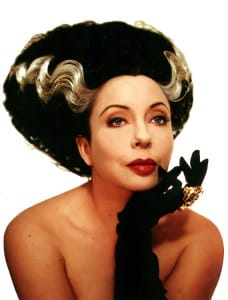
The artist known as ORLAN was born as Mireille Suzanne Francette Porte in Saint-Étienne in 1947. To this day, she shares very little information about her youth and personal life. Art historian, critic, and curator Barbara Rose explains that "As a star in her own literal 'theater of operation,'. ORLAN leaves her background deliberately fuzzy, the better to maintain the anonymity required to project an enigmatic 'star quality.'"
When the artist turned fifteen, she officially changed her name to ORLAN. As she explains, "every letter of my name is written in capitals, because I have no desire to step back into rank." She considers 1964, the date of her first documented work, ORLAN Gives Birth to Her Beloved Self (a photograph of her nude self giving birth to a life-sized mannequin) to be her "real" date of birth.
Education and Early Career
ORLAN tells those who ask that she started making art "when I was a baby", and that she briefly attended art school at the Conservatory of Dramatic Arts and at the School of Fine Arts of Saint-Étienne (ESADSE), but dropped out because it "was too conventional from me". As many other artists were, she was inspired by the social unrest of May 1968, which saw the economy of France cease to function due to general strikes, demonstrations, and the occupation of universities. This event, which some have called a "social revolution", raised the possibility of a new and creative society. Many young people in France, like ORLAN, were inspired by the artistic dimension and creative potential of the May 1968 protests, with several artist groups and countercultural figures taking part in or inspiring aspects of the unreset, such as the posters and slogans connected to the Situationist International. ORLAN was 21 in 1968, and in the aftermath she began to enact public performances and spectacles in her hometown. Over the next decade she continued to perform, venturing further afield to Lyons and as far as New York.
In 1978, while preparing to present at a symposium on Video and Performance art, ORLAN was rushed to hospital for emergency surgery due to an ectopic pregnancy. She recalls, "I almost died [...] They had to operate to save my life and remove what they told me was a non-viable fetus." She brought a film crew along with her, and refused to undergo general anesthetic, wishing to remain conscious for the duration of the pregnancy. She states. "I wasn't in pain and what was happening to my body was of profound interest to me."
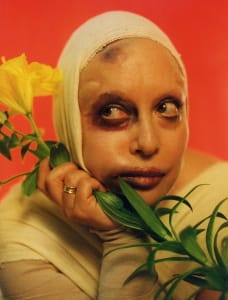
Arts writer Stuart Jeffries notes that "ORLAN saw the surgeon as a priest-like figure, his assistants gathered around him like fellow celebrants at a Catholic mass. The light from above recalled the heavenly beams that shine down in Bernini's Baroque sculpture of Saint Teresa, writhing in religious ecstasy." Likewise, ORLAN states that "For many years, I had appropriated baroque imagery in my work, especially in relation to Catholic art. So when I lay on the operating table, the parallels between the operating theatre and the Catholic mass were not wasted on me." This experience propelled ORLAN toward a fearless use of plastic surgery as part of her Performance art.
Mature Period
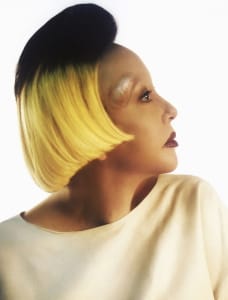
In 1978, ORLAN created the International Symposium of the Performance in Lyon before moving to Paris in 1980. She worked out of a studio in the working-class suburb of Ivry-sur-Seine, next-door to the insane asylum where French writer and artist Antonin Artaud spent the final two years of his life. ORLAN used inmates from the asylum in her early tableaux vivants. In 1982, she and artist Frédéric Develay created the first online magazine of contemporary art, Art-Accès-Revue, on Minitel (a precursor to the internet of today), which invited International artists (like Bernar Venet, Vera Molnár, Ben, François Morellet, and Daniel Buren) to create original works specially conceived "on Minitel, by Minitel, and for Minitel", which were then accompanied by critical essays.
Her most notorious and famous period of work took place in the early 1990s, where she had a series of plastic surgeries publicly performed to modify her face to resemble images from Renaissance and Classical art. This series of nine surgeries, which she titled The Reincarnation of Saint ORLAN (1990-93), included her attempting to reproduce facial features from Botticelli's Venus and Da Vinci's Mona Lisa on her own face. These surgeries were broadcast live to museum audiences, which required a satellite link as they took place before the advent of easy digital video connections. These performances were controversial, with the artist remembering that many people in the art world "wouldn't talk to me anymore", but nevertheless established ORLAN as a major artist at the forefront of formal and bodily experimentation. The press attention and notoriety of these performances also brought her into contact with new audiences and collaborators. The fashion designers Paco Rabanne and Issey Miyake created costumes for her whilst undergoing surgery, for example, bringing the project new attention and publicity.
Whilst attracting both negative and positive reactions in art world media and the general press, the attention generated by these performances resulted in ORLAN receiving further opportunities to exhibit, new teaching positions, and widespread recognition from the international art world. She exhibited multiple series of new works throughout the late 90s and early 2000s, alongside surveys and retrospective exhibitions that confirmed her significance. In 2005, ORLAN was awarded a one-year residency at the ISCP in New York by l'Association française d'action artistique (AFAA), and in 2006 was invited to participate in a residency at the Getty Research Institute in Los Angeles.
In June of 2013, ORLAN filed a complaint against musical artist Lady Gaga for plagiarism, alleging that Lady Gaga had drawn too heavily upon ORLAN's Hybridizations series in the album Born this Way. The court ruled in favor of Lady Gaga, and ORLAN was ordered to pay 10,000 euros, as costs incurred, to the musician.
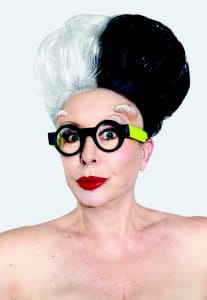
ORLAN now works as a professor of fine arts at the Ecole des Beaux-Arts in Dijon and at the École Nationale Supérieure d'Arts de Paris-Cergy. She lives with her husband, art historian and writer Raphael Cuir. She is represented in France by Paris' Ceysson & Bénétière Gallery. She was awarded the prize of "Woman of the Year" by the Prince of Monte Carlo and decorated with the National Order of the Legion of Honor to the rank of Knight. She continues to make art that explores the use of the artist's body, and the possibilities afforded by new technologies. ORLAN states that her "ultimate work" would be to have her mummified body placed in a museum, though she has yet to find an institution willing to agree to this.
The Legacy of ORLAN
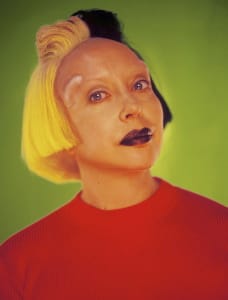
ORLAN has spent the last several decades at the forefront of explorations of the use of science and technology in art. Her performances, installations, and multimedia creations have incorporated video, augmented reality, artificial intelligence, and robotics well before these were commonplace subjects or tools in artistic practice (or present in everyday life). The artist's use of her own body has generated extensive critical discussions regarding the social, theoretical, and ethical implications of controversial technological advances (such as in the field of genetics). In her own words, "Artists today are interested in the context of the body: the body and junk food, pollution, AIDS, the body and new technologies and biotechnologies, the body and genetic modification. The more that technology is involved, the more we wonder what is going to become of humans, and the body in amongst all of that".
As curator François Dareau notes, ORLAN's work (particularly those projects that have involved the surgical modification of her own body) also enters into feminist discourses, by engaging with the theme of the violence done to women's bodies, whether it be violence perpetrated by men, or what might be considered a form of self-inflicted violence (such as plastic surgery) for the purposes of appealing to male tastes. In this way, her oeuvre comes into conversation with that of pioneering feminist artists like Eleanor Antin, Ana Mendieta, Gina Pane, and Cindy Sherman. As artist and writer Siobhan Leddy asserts, "ORLAN is unwilling to be confined by the limits of pain, suffering, or even nature, and will obstinately work against them. If identity is constructed on the surface of a woman's body, on the skin, ORLAN will peel it back to show us what lies beneath, or dramatically alter it so as to participate in the creation of her own identity."
ORLAN's engagement with feminist theory, the body, new technologies, and biotechnologies has laid the groundwork for a younger generation of artists to take up similar work, like Canadian trans artist Nina Arsenault, whose performances involve the enactment of violence upon her own body (such as when she spent two hours whipping herself while riding an exercise bike); and like Cypriot-Australian artist Stelarc, whose performances involve the integration of robotics technologies with his own body. Leddy best summarizes ORLAN's influence when she writes, "Whether or not you find ORLAN's body of work repulsive, stimulating, or something between the two, it's exhilarating to see someone continue to make themselves anew - and with such utter disregard for orthodoxy."
Influences and Connections

-
![Cindy Sherman]() Cindy Sherman
Cindy Sherman -
![Chris Burden]() Chris Burden
Chris Burden -
![Marcel Duchamp]() Marcel Duchamp
Marcel Duchamp - Herman Nitsch
- Frédéric Develay
- Charlemagne Palestine
- Jean Dupuy
- Hubert Besacier
![Stelarc]() Stelarc
Stelarc- Nina Arsenault
- Jeremy Scott
- Lady Gaga
- Gülizar Çepoglu
- Frédéric Develay
- Charlemagne Palestine
- Jean Dupuy
- Hubert Besacier
Useful Resources on ORLAN
- Fabulous Harlequin: ORLAN and the Patchwork SelfOur PickBy Jorge Daniel Veneciano and Rhonda Garelick
- Portrait of an Artist: A Dialogue with Marina Abramović, Tania Bruguera, Tracey Emin, Shirin Neshat, ORLAN, Yoko Ono, and Kiki SmithBy Hugo Huerta Marin
- ORLAN: A Hybrid Body of ArtworksOur PickBy Simon Donger and Simon Shepherd
- ORLAN: Millennial Female (Dress, Body, Culture)By Kate Ince
- The Textuality of the Body: ORLAN's Performance Art as Subversive Act: Analyzing the Feminist Debate, Theorizing Race, and De-Colonizing the Representation of the Female BodyBy Kara Lee Rowe
- ORLAN: Carnal ArtOur PickBy E. Hartney, B. Blistene, C. Buci-Glucksmann, C. Cros, and R. Durand
- The Body in PerformanceBy Patrick Campbell
